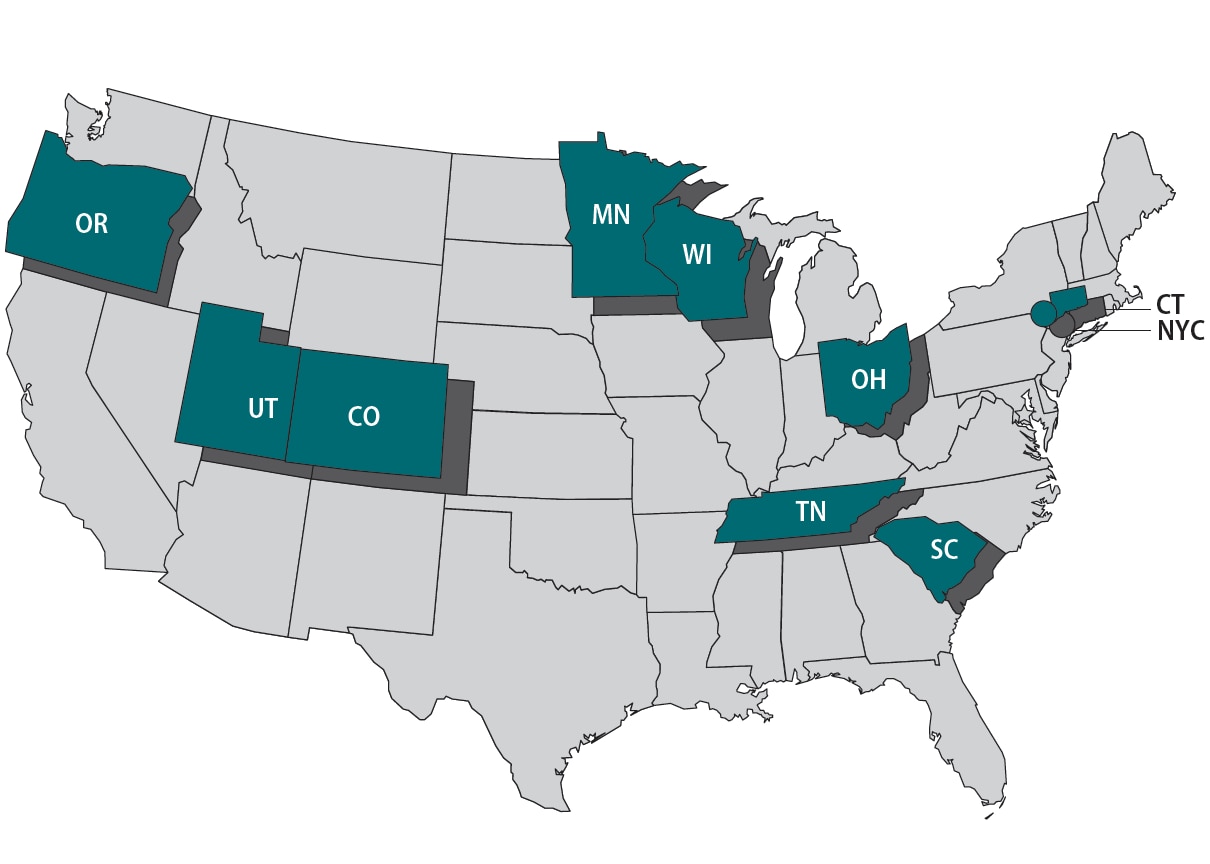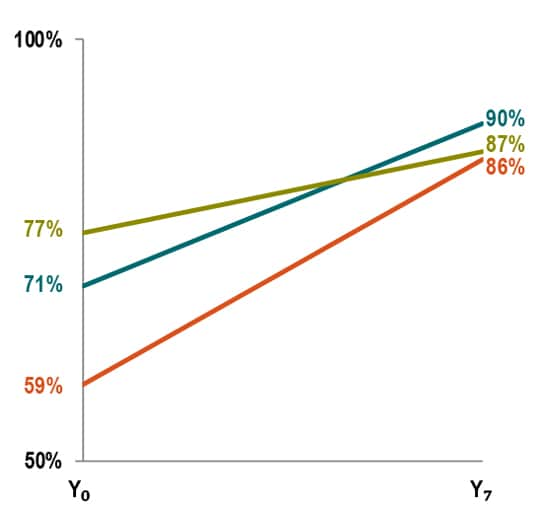What to know
Foodborne Diseases Centers for Outbreak Response Enhancement (FoodCORE) centers address gaps in foodborne disease response through enhanced capacity in laboratory, epidemiology, and environmental health to improve timeliness and completeness of outbreak response activities. The FoodCORE centers during Year Seven (January 1 – December 31, 2017) were Colorado, Connecticut, Minnesota, New York City, Ohio, Oregon, South Carolina, Tennessee, Utah, and Wisconsin.

Highlights
In 2017, FoodCORE centers delivered presentations at meetings and conferences to showcase their outbreaks, projects, and successes. The CDC FoodCORE Team presented program overviews and CDC's capacity-building strategy at scientific conferences, programmatic meetings, and invited talks. Presentations included:
- Breakout and roundtable sessions at the CSTE Annual Conference
- An open session at the InFORM Conference
- Updates at the PulseNet/OutbreakNet Regional Meetings
A success story on culture-independent diagnostic testing (CIDTs) was added to the FoodCORE website in 2017. This story covers the challenges CIDTs pose to surveillance and how FoodCORE centers have adapted to and benefited from the technology. CIDTs have been used to find outbreaks and identify pathogens faster resulting in sooner action and the prevention of illnesses. FoodCORE centers will continue to share lessons learned as they work through the real-world implications of CIDTs.
In 2017, the fourth FoodCORE Model Practice was published to the FoodCORE website. This model practice describes strategies used in FoodCORE centers to establish and maintain connections among laboratorians, epidemiologists, and environmental health specialists. Having strong partnerships and clear lines of communication is critical. Delays or interruptions in communication and data sharing between team members can impede investigations; a prepared and coordinated team can work together to quickly solve and stop outbreaks, preventing additional illnesses.
The Communication and Collaboration Model Practice is a resource for jurisdictions that wish to establish or strengthen relationships on multidisciplinary teams. The model practice contains a checklist and a list of trainings and resources to help readers implement the successful practices.
Program performance
Centers report metrics twice a year to document changes resulting from targeted FoodCORE resources. Metrics for Salmonella, Shiga toxin-producing Escherichia coli (STEC), and Listeria (SSL) have been collected since late 2010. Metrics for norovirus, other etiologies, and unknown etiology (NOU) investigations have been collected since 2012. The metrics collected by FoodCORE centers are revised as needed to best meet program goals.
Graphs for selected metrics - Year Seven
- Over 13,000 SSL isolates submitted to or recovered at PHL
- More than 12,000 cases reported to epidemiology staff
- Approximately 760 SSL and 1,400 NOU investigations conducted
Centers increased the proportion of primary SSL isolates with whole genome sequencing (WGS) information between Year 6 and Year 7 while increasing the proportion of primary SSL isolates with pulsed-field gel electrophoresis (PFGE) information.
To evaluate the timeliness and completeness of WGS, centers pilot tested a set of expanded SSL metrics in Year 6. The expanded metrics went into effect in Year 7.

Centers increased the proportion of confirmed Salmonella, STEC, and Listeria cases with exposure history obtained from Baseline to Year 7.
In Year 7, it took centers 1.3 days to attempt an interview and 2.8 days to complete an interview for confirmed SSL cases.

In Year 7, centers conducted 66 SSL and 140 NOU environmental health assessments as part of investigations where there was a link to a common location of exposures.
Environmental health assessments provide information needed to recommend effective short and long-term interventions that stop ongoing foodborne outbreaks and prevent them in the future.
- Baseline (Y0) =Oct 2010 – Mar 2011
- Year 1 (Y1) =Oct 2010 – Sept 2011
- Year 2 (Y2) =Oct 2011 – Dec 2012
- Year 3 (Y3) =Jan 2013 – Dec 2013
- Year 4 (Y4) =Jan 2014 – Dec 2014
- Year 5 (Y5) =Jan 2015 – Dec 2015
- Year 6 (Y6) =Jan 2016 – Dec 2016
- Year 7 (Y7) =Jan 2017 – Dec 2017
- Only foodborne and point-source investigations are reported for NOU metrics.
